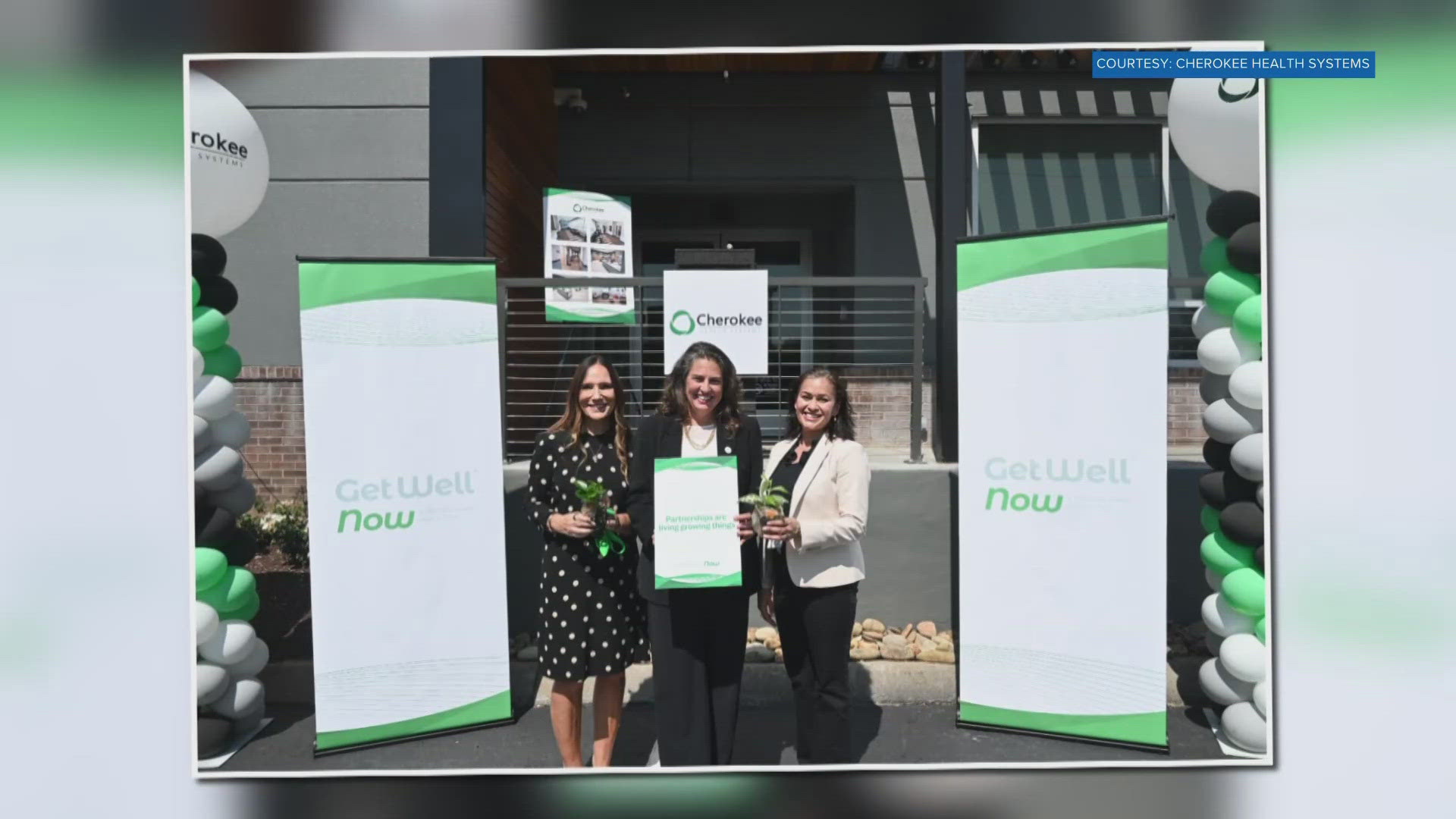KNOXVILLE, Tenn. — On Tuesday, the Knoxville City Council will meet to discuss an agenda that includes several proposals regarding zoning changes, as well as resolutions focused on giving police officers additional work and a proposed pedestrian bridge over the Tennessee River.
Their regular meeting was scheduled to start at 6 p.m. on Tuesday. Additional information about some proposals on the agenda is available below.
Appeals on Zoning Changes
Three different zoning appeals will be heard in the meeting. The proposals were previously on the Knoxville-Knox County Planning Commission's agenda in August. The appellant for the changes said, "The Planning Commission adopted staff recommendation that did not address the substance of the proposed zoning amendments."
That appellant said the proposals stem from recommendations in the Missing Middle Housing report from last year. That report was designed to identify ways Knoxville could accommodate more people seeking to live closer to the city and provided recommendations for city leaders, which the commission chose to follow.
"Increasingly, millennials and baby boomers are looking for more choices and smaller places to live that are within walking distance of their lifestyle. But the choices primarily continue to be single-family houses and large apartment projects," the report says.
It makes 29 specific recommendations on how the city approaches zoning policy, emphasizing fewer single-family homes in favor of multi-family units. However, it also does not emphasize the construction of apartment buildings — emphasizing the development of a third type of home.
"Missing Middle Housing is intended to be part of low-rise residential neighborhoods, which are typically zoned as some variety of 'single-family residential.' However, because MMH contains multiple units, it is, by definition, not allowed in single-unit zoning districts. But MMH is not the same as typical apartment projects either," the report says.
MMH can include simple designs that appear like large homes or townhouses, as well as duplexes and multiplexes. They usually include off-street parking, up to two-and-a-half stories and shared open spaces, according to the report.


It made 29 specific recommendations for the implementation of MMH in Knoxville, as well as additional recommendations on how city leaders could go about implementing the type of housing. The Planning Commission recommended city leaders follow those steps, which the appellant said did not address the amendments they proposed.
Details about the three different zoning appeals are available below.
The appellant's proposed rules specify that two-family dwellings and accessory dwelling units would be allowed to be built in single-family zones and general residential zones, bypassing a process in which developers would need to seek special approval.
The MMH report said ADUs could be built separately from their main building to provide more housing. The MMH report had only recommended building these units in triplexes, fourplexes, duplex side-by-sides and duplex stacked developments.
According to the appeal documents, the Planning Commission said the detached multi-family definition in the proposed amendment does not specify the number of units or reference dimensional standards.
"The zoning code already provides for multiple dwellings on one lot in residential zones RN-3 through RN-7. Additionally, in situations where applicants want to develop a small group of dwellings, they could do so under the pocket neighborhood provision," the Planning Commission's staff said.
They also cited a previous book on Missing Middle Housing, written before the report in 2020.
In Missing Middle Housing (Parolek, 2020), the authors state “do not allow multiple single-family homes on a lot,” providing the following note: “these types are unlikely to deliver the range of affordability and attainability desired because they primarily deliver large units. They are also bad urban form, with one major flaw being that the three-story massing of the buildings is often pushed right up against the rear property line, impacting the privacy of neighbors” (p. 257-258).
The appellant's proposed amendments would make two changes in commercial and office districts. It would eliminate a rule requiring a house to be built at least 15 feet from the property line if it is a corner unit, and the rear yard must be 20 feet. It would also reduce the minimum distance between a property line and a building in the rear to 10 feet, hoping to allow more development in an area.
According to the appeal documents, the Planning Commission said the MMH report did not evaluate this type of district, and it was unclear if the proposed setback reductions would apply to all uses in the district or just residential ones.
The appellant's amendment would waive a parking lot requirement for "detached multifamily dwelling" developments located near single-family residential districts. It would also change setback rules in cases where a development in a "commercial-neighborhood" district is used only for homes.
It would also remove parking requirements for almost all residential uses, but retain parking requirements for above-ground dwellings. It would also add a provision "reducing the minimum number of vehicle parking spaces required to 1 space per dwelling unit in any commercial district when it is within ¼ mile of a transit route."
According to the appeal documents, the Planning Commission's staff said the proposed "detached multi-family" definition was incomplete and should not receive parking-related exemptions until further defined. It also said the setback changes would conflict with utility and drainage easement requirements in subdivisions.
"The MMH Scan recommends revising multi-family parking area setbacks from 10’ to 5’ to allow for a landscape planter; it does not recommend removing setbacks entirely," they said.
They also said it was unclear why only above-ground dwellings would retain parking requirements.
"Elimination of parking for multifamily developments would force all residents to park on the street. This may not be feasible in areas where sight distance is an issue, creating safety issues for pedestrians, or where street parking is not possible due to street width or some other physical condition," they said. "Additionally, depending on the size of the multifamily development, there may not be enough parking spaces on the block to accommodate all residents, and this would not account for guest parking."
City leaders will vote on whether to spend $87,225 so Walker Consultants can analyze the city and make recommendations for a strategic parking plan.
"Downtown has experienced massive growth with significant increases to both residential and commercial activity, with more on the horizon. The City wants to manage existing parking assets strategically, explore expected parking needs, and incorporate industry best practices while preserving the qualities unique to downtown Knoxville," the city said.
According to the resolution's webpage, downtown residents have doubled over the last decade and more are expected. They said several multi-story hotels and many restaurants have also opened in that timespan which require parking for staff, patrons and visitors.
"Walker Consultants was deemed the most responsive and responsible proposer of four and will provide recommendations for a strategic plan based on a comprehensive analysis of all parking options. Recommendations shall include a management approach based on current and projected demand, and a comparison of our current system against best practices for similar systems," the webpage said.
City council members will also discuss whether to work with Off Duty Management to provide KPD officers with off-duty work. The company, Off Duty Management, would schedule work, collect payments and reimburse off-duty officers when they agree to take a job.
The company said KPD officers would have access to an online portal to view job requests and interact with clients, both through a browser and through a phone app. KPD administrators would also be able to accept, reject and modify job requests. They said they would also add a "hire an off-duty police officer" option on KPD's website.
The resolution said the cost of working with Off Duty Management would be passed onto clients who request off-duty officers. It would not cost the city any money, they said.
The Knoxville City Council will discuss whether to take a step formally accepting $20 million from the state to build the "South Waterfront Pedestrian and Bicycle Bridge." Federal leaders did not approve a request for an additional $25 million in federal money to build the bridge.
The pedestrian bridge is expected to cost around $70 million and would connect a portion of South Knoxville to UT's campus at Neyland Stadium. A county commissioner had previously proposed using the money to build a mental health facility. However, state leaders said they did not believe they could move the funds.
In May, Tennessee Athletics announced an initiative to transform the area on the Tennessee River waterfront where the bridge would connect into what it's calling the Neyland Entertainment District. The project aims to improve the aesthetics around Neyland Stadium with plans to add more retail spaces in that area and build a full-serve hotel that includes for-sale condos and conference space.



